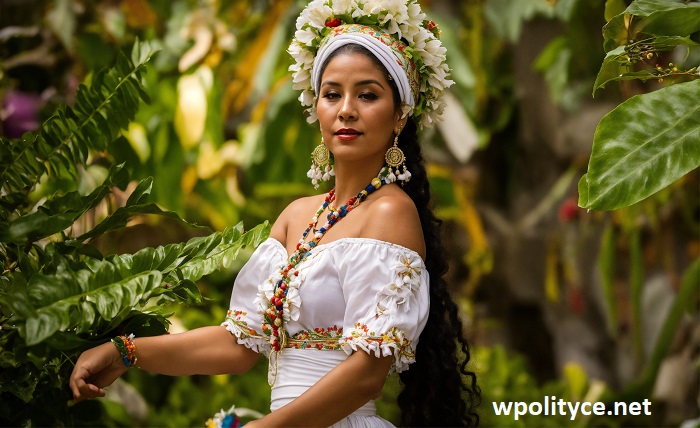Silent Siren: Legacy of Myrtle Gonzalez, Hollywood’s First Latina Star

Flickering images on a silver screen, whispers of forgotten dreams, and the echo of a forgotten name – all that remains of Myrtle Gonzalez, the woman who broke barriers and carved her name in the silent film era. Her story is a silent symphony, a testament to talent, tenacity, and a spirit that refused to be dimmed. So, let us turn back the clock, rewind the projector, and rediscover the magic of Myrtle Gonzalez, the forgotten star who lit up Hollywood’s golden age.
From Californio Roots to Silver Screen Stardom
Born in 1891 in Los Angeles, Myrtle’s heritage was a rich tapestry of Mexican and Irish ancestry. A child of the Californio era, she inherited a vibrant cultural spirit and a natural talent for singing and acting. Her soprano voice captivated audiences in church choirs and local theaters, setting the stage for her future triumphs.
At the tender age of 19, Myrtle stepped into the burgeoning world of silent cinema. With her captivating features, expressive eyes, and undeniable charisma, she quickly climbed the ranks of Vitagraph Studios. Her early roles ranged from innocent ingenues to fiery damsels in distress, each showcasing her versatility and captivating screen presence.
Shining in the Spotlight: From Sweetheart to Siren
One film catapulted Myrtle into stardom: “The Chalice of Courage” (1915). Playing Enid Maitland, a woman thrust into perilous adventures, Myrtle displayed her strength and grace, defying the damsel-in-distress stereotype. The film became a commercial and critical success, establishing Myrtle as a leading lady and earning her the title “The Virgin White Lily of the Screen.”
But Myrtle refused to be typecast. She embraced roles that challenged her range, portraying femme fatales, comedic characters, and even stunt-heavy action heroes. In films like “The Level” (1914) and “Million Dollar Mystery” (1914), she redefined the image of the Latinx woman in cinema, showcasing her diversity and talent.
Beyond the Silver Screen: Love, Loss, and a Legacy Etched in Celluloid
Myrtle’s life wasn’t just about dazzling performances and studio lights. She found love and married James Park Jones, with whom she shared the joy of parenthood. However, tragedy struck in 1918 when the Spanish Flu pandemic swept the globe. Myrtle, at the peak of her career, fell victim to the illness, leaving behind her young son and a grieving Hollywood.
Myrtle Gonzalez’s story is a bittersweet symphony. Though her life was tragically cut short, her legacy lingers on. She shattered stereotypes, paving the way for future generations of Latinx actors and actresses. Her films, though some lost to time, remain silent testaments to her talent and the indelible mark she left on Hollywood’s history.
The Facets of the Forgotten Star
Trailblazer: Myrtle was the first commercially successful Latina film star, proving her talent and defying racial barriers in the early 20th century.
Versatility: Her roles spanned the spectrum, from delicate heroines to fierce warriors, showcasing her impressive range and adaptability.
Beyond Beauty: More than just a captivating face, Myrtle possessed a depth and strength that shone through on screen, challenging the one-dimensional portrayal of women in silent films.
Tragic Loss: Her untimely death at the age of 27 robbed the world of a rising star and left a void in Hollywood’s silent era.
Conclusion
Myrtle Gonzalez may be a forgotten name to some, but her story is a beacon that refuses to be extinguished. She wasn’t just an actress; she was a symbol of resilience, talent, and the power of representation. Let her legacy be a reminder that even the faintest whispers can echo through time, inspiring future generations to break barriers and claim their place in the spotlight.
FAQ
1. How can I learn more about Myrtle Gonzalez and her films?
Various resources exist to delve deeper into her life and work. Organizations like the Silent Film Institute and the Library of Congress hold archives and information about silent film era actors and films. Additionally, historical newspapers and online research databases can offer fascinating insights into her career and cultural impact.
2. Are there any efforts to restore or preserve Myrtle Gonzalez’s films?
Yes! Several initiatives are dedicated to restoring and preserving silent films, including the efforts of the National Film Preservation Board and the Library of Congress. While some of her films remain lost, these projects offer hope for rediscovering and restoring more of her cinematic legacy.
3. How can I support representation and diversity in the entertainment industry today?
You can play a vital role in promoting diversity and representation! Seek out and support films and projects featuring creators and actors from diverse backgrounds. Amplify the voices of underrepresented communities, and advocate for more inclusive storytelling in the entertainment industry. Every action, however small, can contribute to a more equitable and inclusive landscape.
4. Where can I find out more about the history of Latinx representation in Hollywood?
Numerous resources, including books, documentaries, and online articles, explore the history of Latinx representation in film and television. Organizations like the National Association of Latino Independent Producers (NALIP) and the Hispanic Heritage Foundation also provide valuable information and resources.
5. How can I honor Myrtle Gonzalez’s legacy?
By remembering her story, celebrating her achievements, and advocating for diverse representation, we can keep her legacy alive. Share her story with others, support initiatives that champion inclusivity, and continue to break down barriers in the entertainment industry. Let Myrtle’s spirit of resilience and talent inspire us to create a world where stories like hers are not forgotten, but embraced and celebrated.




